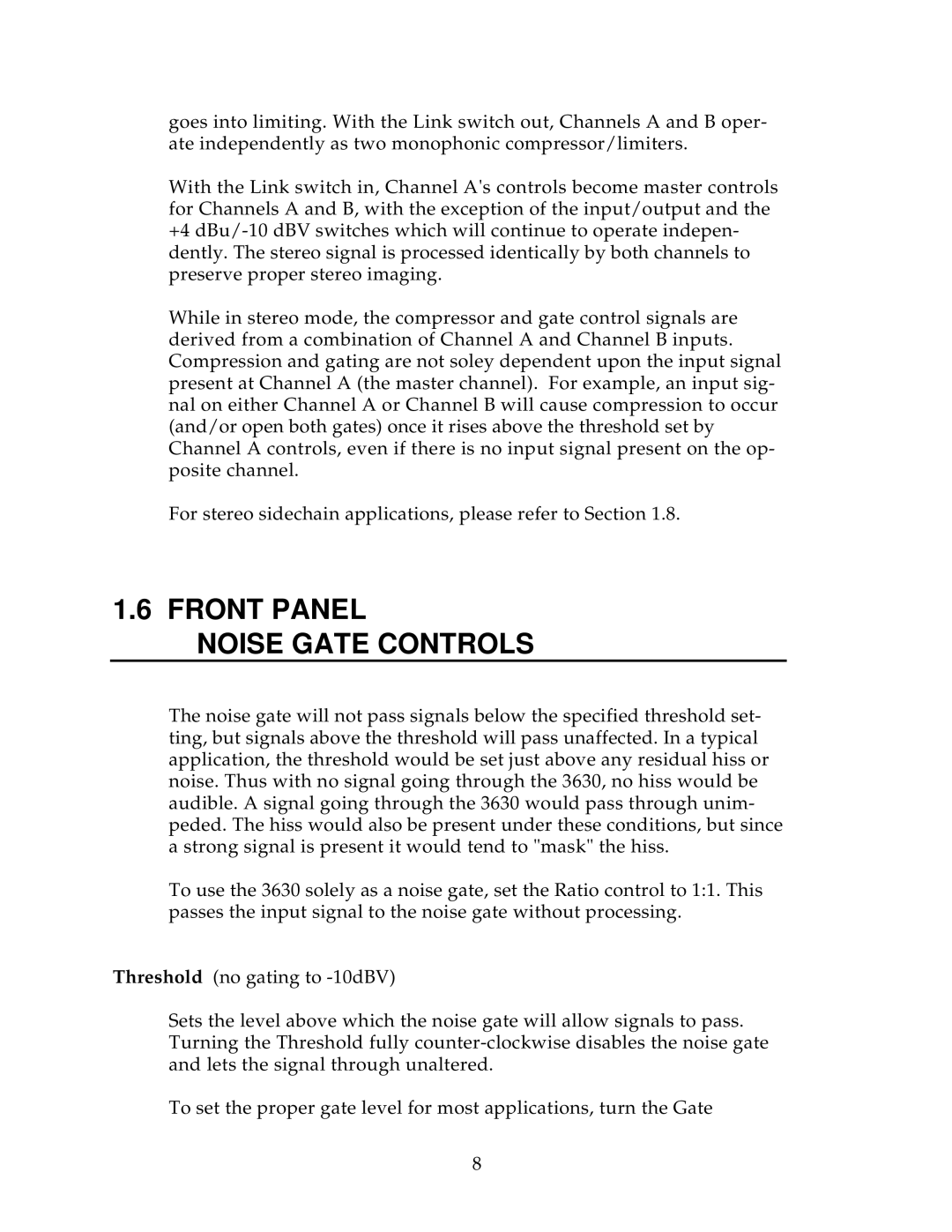goes into limiting. With the Link switch out, Channels A and B oper- ate independently as two monophonic compressor/limiters.
With the Link switch in, Channel A's controls become master controls for Channels A and B, with the exception of the input/output and the +4
While in stereo mode, the compressor and gate control signals are derived from a combination of Channel A and Channel B inputs. Compression and gating are not soley dependent upon the input signal present at Channel A (the master channel). For example, an input sig- nal on either Channel A or Channel B will cause compression to occur (and/or open both gates) once it rises above the threshold set by Channel A controls, even if there is no input signal present on the op- posite channel.
For stereo sidechain applications, please refer to Section 1.8.
1.6 FRONT PANEL
NOISE GATE CONTROLS
The noise gate will not pass signals below the specified threshold set- ting, but signals above the threshold will pass unaffected. In a typical application, the threshold would be set just above any residual hiss or noise. Thus with no signal going through the 3630, no hiss would be audible. A signal going through the 3630 would pass through unim- peded. The hiss would also be present under these conditions, but since a strong signal is present it would tend to "mask" the hiss.
To use the 3630 solely as a noise gate, set the Ratio control to 1:1. This passes the input signal to the noise gate without processing.
Threshold (no gating to
Sets the level above which the noise gate will allow signals to pass. Turning the Threshold fully
To set the proper gate level for most applications, turn the Gate
8
